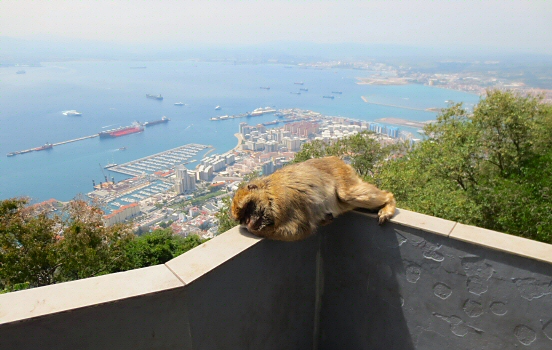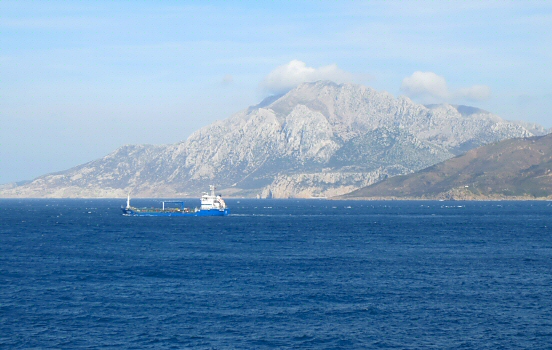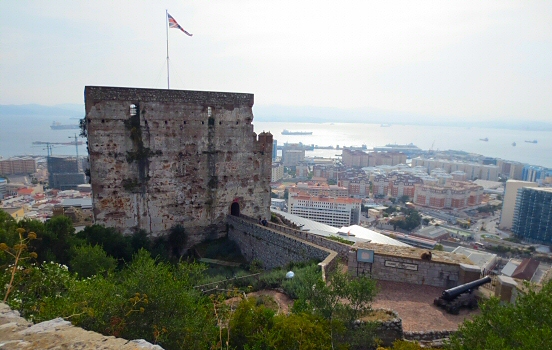No shade on Alcatraz in San Francisco, but the Rock of Gibraltar is so much more worthy of the name. In ancient times, this was one of the Pillars of Hercules, flanking the entrance to the Strait of Gibraltar.
The southern pillar is located on the North African shore, visible at the horizon. According to Plato, the lost city of Atlantis was located beyond the pillars.
 The view from Rock of Gibraltar.
The view from Rock of Gibraltar.
The name of Gibraltar derives from Jabal al-Tariq, as the mountain (jabal in Arabic) was named after the Moorish leader Tariq (try to say it quick three times, and you’ll understand).
The British have held the territory since 1713, but there are layers of history preceeding them, such as the remains of 8th century Moorish castle.
I found a cable car which ascended the limestone ridge in itself. Mark Twain was here in 1867. Gibraltar was his first sight of Europe and he described the ascend in his book The Innocents Abroad published two years later:
“On the topmost pinnacle of Gibraltar we halted a good while, and no doubt the mules were tired.”
— Mark Twain (1867)
 Monkey business.
Monkey business.
It is also possible to take a third route, the Mediterranean Steps. But as I looked down I saw a few people going up the stairs in a very slow pace, clearly bothered by the hot sun and hungry apes.
Apes? Yes, the mountain is filled with Barbary apes, which managed to startle even James Bond (Timothy Dalton) in the 1987 movie The Living Daylights. As we walked along the paths on top of the cliff, the few places with shade were occupied by angry apes, so we continued to suffer in the relentless sun.
We entered St. Michael’s Cave, an impressive limestone cave with provided a refreshing moment of shade. But the main draw of Gibraltar is of course the Rock, so we continue along the path while trying to avoid the apes.
 The less familiar southern pillar.
The less familiar southern pillar.
As I stand on the top of the Rock, looking down at both Africa and Europe, as well as Great Britain and Spain in the same frame, it becomes crystal clear why this barren mountain has been of utmost importance during the centuries.



Comments
No comments yet.
Leave a reply